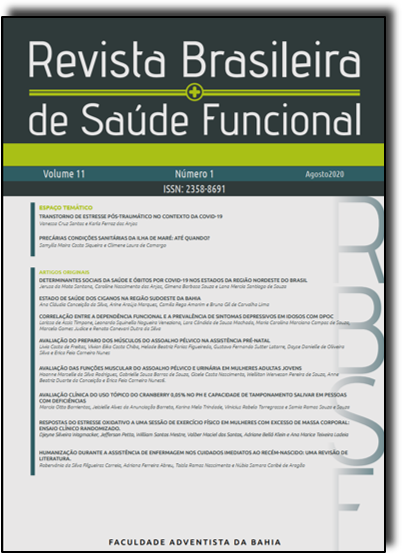RESPOSTAS DO ESTRESSE OXIDATIVO A UMA SESSÃO DE EXERCÍCIO FÍSICO EM MULHERES COM EXCESSO DE MASSA CORPORAL: ENSAIO CLÍNICO RANDOMIZADO.
DOI:
https://doi.org/10.25194/rebrasf.v8i2.1311Abstract
Introduction: Oxidative stress is related to the onset of cardiovascular diseases. Sedentary lifestyle and obesity predispose to an increased in the formation of reactive oxygen species and physical activity has been considered as a factor for reducing it. Objective: To assess whether a session of low to moderate intensity exercise alters oxidative stress after 12 hours in women with increased body weight.
Method: There were included 30 women sedentary with excess body weight (BMI of 29 ± 4.4 kg / m2) randomly divided into two groups. After a 12-hour fast, the volunteers made a first blood collection. The experiment group underwent a physical exercise session, 12 hours after the first blood collection. The volunteers in the control and experiment groups performed a second blood collection 24 hours after the first. Triglycerides, total cholesterol, TBARS, carbonyls and sulfhydryl were measured. T-tests were used for independent and dependent samples adopting a significance level of 5%.
Results: Physical exercise modified the lipid peroxidation response in the intergroup analysis (control = Δ 0.49 (-0.18 - 0.81) vs experiment = Δ-0.09 (-0.58 - 0.21)) (p = 0.02). In the intragroup analysis, an increase in TBARS was identified only in the control group (before = 1.97 ± 0.65; after = 2.28 ± 0.47; p = 0.049). There were no changes for sulfhydryl and carbonyls in intra and intergroup analyzes.
Conclusion: The subacute effect of low intensity physical exercise is able to modify the lipid peroxidation response, without interfering with protein peroxidation and antioxidant factor.


